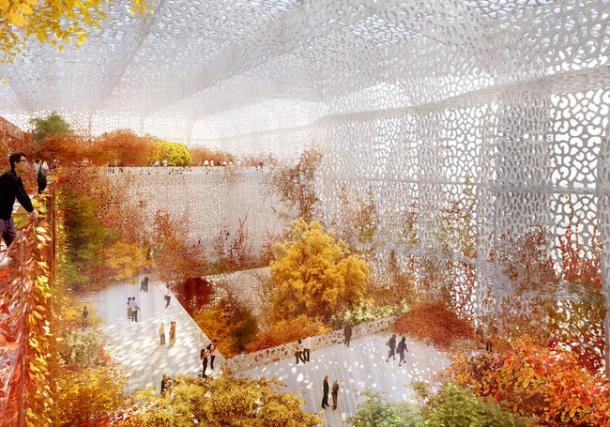Architect Jean Nouvel unveiled the official design for the new National Art Museum of China (NAMOC) during a press conference in Beijing last week, Archdaily reports.
Of the design, Nouvel describes it as inspired by the simplicity of “a single brush stroke.”
The museum’s new site will have seven times more space than the current one in the Dongcheng District, near the Forbidden City. The site will be in the Olympic Village, further away from the Forbidden City but within ancient Beijing’s historical access.
According to Archinect, the new NAMOC will be 1.4 million sf and will house various collections of 100,000 pieces from the 1500s to contemporary times. The museum’s primary exhibition will be calligraphy and 21st century Chinese art. The museum will include temporary and permanent exhibition galleries, a research and education center, reserves an auditorium, and public and administrative spaces.
Other star architects who submitted designs back in 2012 for the competition include Rem Koolhaas, Zaha Hadid, and Frank Gehry.
Related Stories
| Aug 11, 2010
BIM school, green school: California's newest high-performance school
Nestled deep in the Napa Valley, the city of American Canyon is one of a number of new communities in Northern California that have experienced tremendous growth in the last five years. Located 42 miles northeast of San Francisco, American Canyon had a population of just over 9,000 in 2000; by 2008, that figure stood at 15,276, with 28% of the population under age 18.














